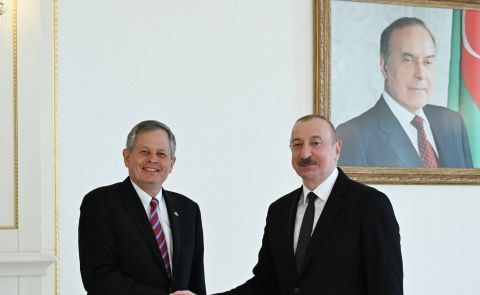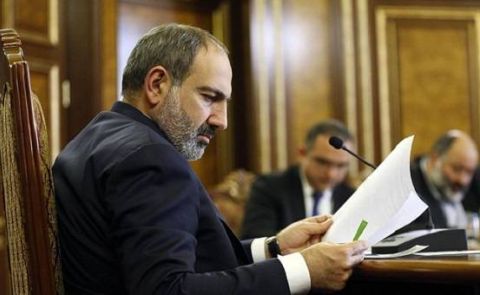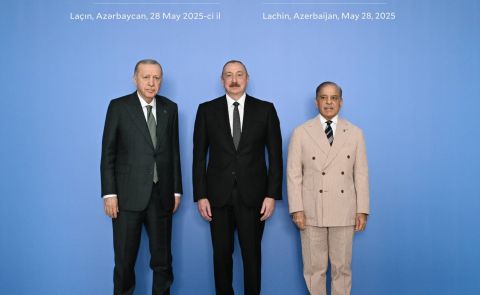
South Caucasus countries in the World Bank economic update for Europe and Central Asia

On 8 April, the World Bank (WB) published their economic update on Europe and and Central Asia. The report stated that the Covid-19 pandemic is likely to derail the near-term outlook by interrupting daily activity, putting further downward pressure on commodity prices, disrupting tightly linked global and regional supply chains, reducing travel and tourist arrivals, and decreasing demand for exports from economies in the region.
In relation to the South Caucasus, the report stated that the GDP growth in the subregion could fall to −0.9 to 0.1% this year, as the subregion faces growth headwinds from the coronavirus outbreak and, subsequently, low commodity prices. Activity is projected to pick up to 2.2 to 3.4 percent in 2021, as the impacts of the shocks dissipate, and tourism recovers alongside improving consumer and business confidence in Armenia and Georgia. Activity is expected to recover in Azerbaijan as oil prices modestly improve but at low levels; dampened commodity prices, along with lingering structural rigidities, will mute the overall recovery.
As for Armenia, the outlook stated that GDP growth in 2020 is expected to moderate to 1.7% due to lower exports and private domestic demand. This deceleration is expected to be cushioned by fiscal expansion, both by increased current spending—in health and social spending, in particular— as well as support to businesses and higher public investment. With the slowdown affecting labor-intensive sectors, poverty reduction will be modest, at best. Inflation pressures are expected to remain low, reflecting low global commodity prices and moderating demand. The external deficit will remain wide as external demand scales back and remittance inflows drop sharply due a weaker Russian economy and a depreciated ruble. The budget will provide some fiscal stimulus, with the fiscal deficit forecast to widen to about 4.7 percent of GDP, including a 2.2 percent of GDP fiscal stimulus package as a response to the COVID-19 pandemic. With government debt at near 50 percent of GDP, the escape clause of the fiscal rule may need to be invoked. GDP growth is forecast to recover over the medium term, to around 4.5 percent in 2021 –22, supported by stabilizing external conditions and catch-up of delayed activities.
The main challenges that the Armenian economy could face are the temporary collapse in external demand, both for goods and services, a decline in tourism revenues, the decline of copper prices and remittances (mostly from the Russian Federation).
As for Azerbaijan, assuming the negative effects are contained in the first half of 2020 and followed by stabilization of oil prices, GDP growth is forecast to turn slightly negative in 2020. Non-energy growth will be affected by deteriorating consumer confidence and plummeting receipts from tourism, trade, and hospitality, but partially cushioned by recent government support policies. GDP growth is expected to rebound in 2021–22, as the impact of the shocks dissipates. Under this scenario, poverty reduction is expected to stagnate or possibly rescind, as many households can fall back to poverty in case of deteriorating health of bread winners, unemployment, food inflation, or lower remittances. Inflation is forecast to accelerate slightly in 2020, reflecting the lingering effects of the pick-up in demand. Over the medium term, inflation will stabilize at around 3%. The external balance is estimated to turn to a significant deficit in 2020. The consolidated government budget is projected to record a deficit in 2020, as oil prices are below the budget break-even price of about $48/barrel.
The main challenges for Azerbaijan would be depressed oil revenues, reduced trade and financial flows, plummeting receipts from the tourism and hospitality sectors, and deteriorating consumer confidence from efforts to contain the spread, such as “social distancing” and other restrictions. Azerbaijan’s existing challenges in macroeconomic management—including a strong dependence on oil revenues, limited exchange rate flexibility, and financial system vulnerability—would need to be addressed as part of a consistent macroeconomic response.
As for Georgia, real GDP growth is projected to sharply slow to close to zero in 2020 as the impact of COVID-19 adds to an already challenging external environment. This will be partly cushioned by a fiscal stimulus of around 2% of GDP containing acceleration of capital spending, tax deferrals, accelerated VAT refunds and sector support for most affected businesses, as well as higher social spending. This is expected to push the fiscal deficit to around 5.2% of GDP in 2020. With growth sharply moderating in 2020, the poverty reduction trend from the last couple of years is projected to stop as households grapple with the adverse direct and indirect effects of COVID-19. Potential health shocks to household earners, lower remittances as a result of reduced economic activity in sender countries, higher domestic prices due to shortages in supply chains, and lower employment and or earnings stemming from lower aggregate demand are all likely to adversely affect poverty reduction
The key challenges for Georgia would be the loss in tourism revenues due to the pandemic, remittances and commodity prices. Beyond the COVID-19 pandemic, substantial quasi-fiscal risks would emanate from Georgia’s state-owned enterprises and power purchasing agreements which provide state guarantees for the purchase of excess electricity from power generators.
See Also


Pashinyan Commemorates First Republic Day, Highlights Progress in Sovereignty and Peace Efforts

Israeli Ambassador to Armenia Acknowledges Challenges but Optimistic About Future Armenian-Israeli Cooperation

EU Plans Closer Cooperation with Azerbaijan, Georgia, Türkiye, and Other Black Sea States

Azerbaijan, Türkiye, and Pakistan Highlight Growing Strategic Cooperation at Lachin Summit

